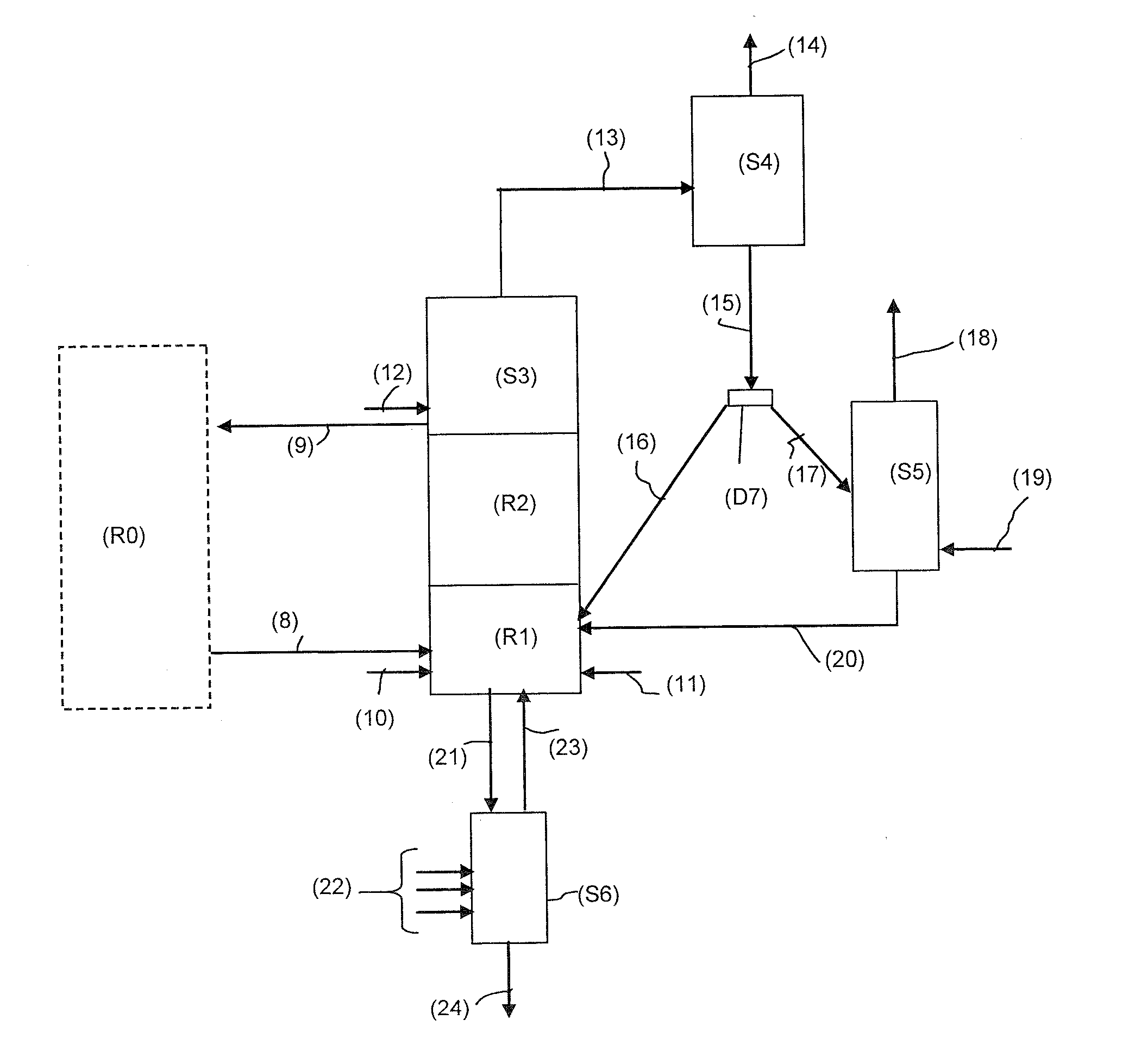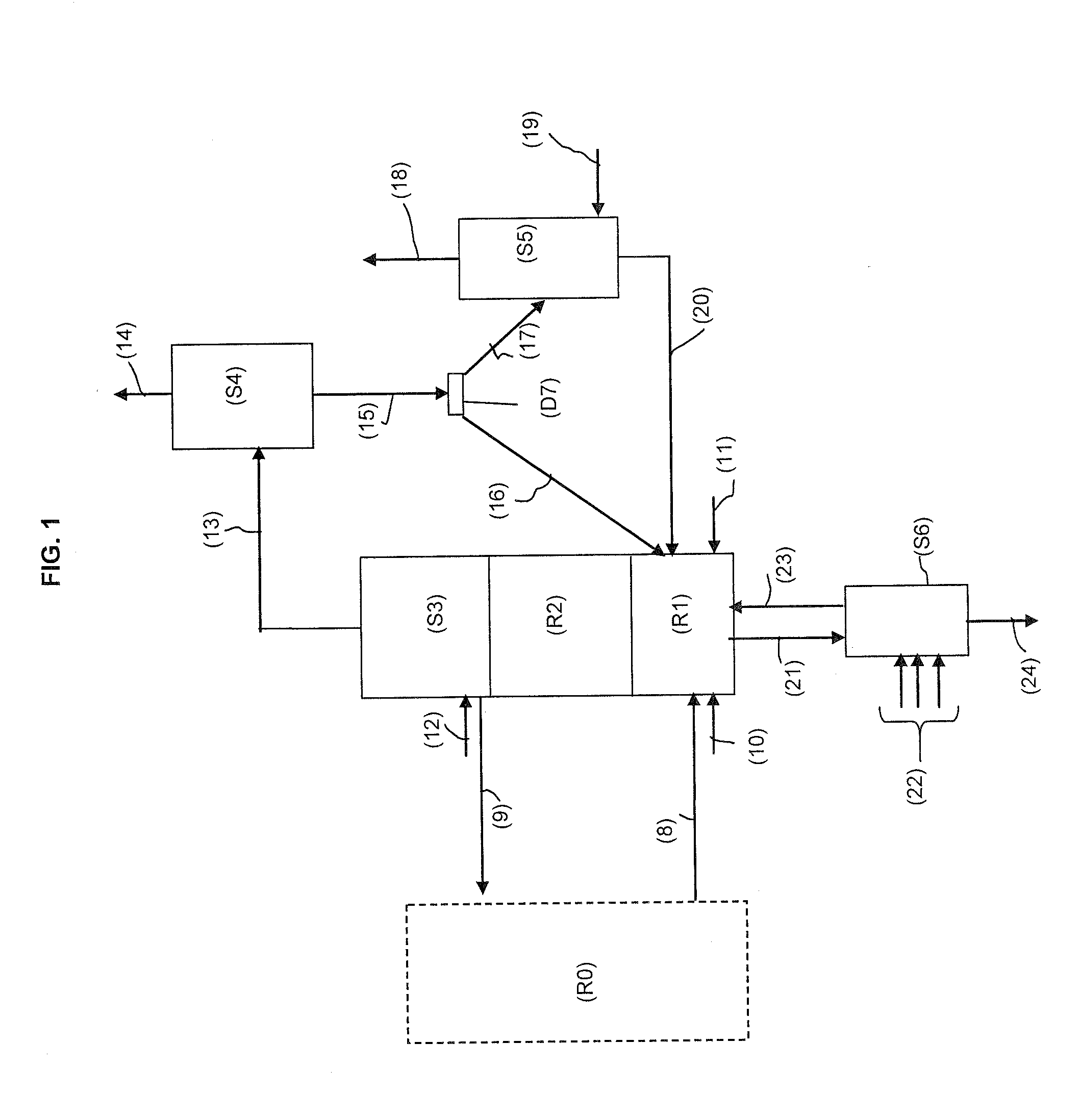Chemical-looping combustion method with ashes and fines removal in the reduction zone and plant using same
- Summary
- Abstract
- Description
- Claims
- Application Information
AI Technical Summary
Benefits of technology
Problems solved by technology
Method used
Image
Examples
example
[0136]The example below illustrates the invention using the simulation of the operation of a 3-MWth plant.
[0137]This plant is supplied with coal at a flow rate of 420 kg / h characterized by an ash content of 13.9 wt. % and a volatile content of 29.9%.
[0138]The coal is supplied in the fuel reactor with a grain size characterized by the fact that less than 2% of the coal has a particle size above 200 microns.
[0139]The grain size composition of the oxygen-carrying material is such that more than 90% of the grains ranges between 150 and 300 microns, and the density of the oxygen-carrying material is close to 4000 kg / m3.
[0140]The grain size distribution of the fly ashes is given by way of example in FIG. 3.
[0141]The fuel reactor is made up of 3 zones:[0142]a first reaction zone R1 for contacting solid feed particles in the presence of metallic oxide particles under dense fluidized bed conditions;[0143]a dilute phase combustion zone (second reaction zone R2) for the gaseous effluents from ...
PUM
 Login to View More
Login to View More Abstract
Description
Claims
Application Information
 Login to View More
Login to View More - R&D
- Intellectual Property
- Life Sciences
- Materials
- Tech Scout
- Unparalleled Data Quality
- Higher Quality Content
- 60% Fewer Hallucinations
Browse by: Latest US Patents, China's latest patents, Technical Efficacy Thesaurus, Application Domain, Technology Topic, Popular Technical Reports.
© 2025 PatSnap. All rights reserved.Legal|Privacy policy|Modern Slavery Act Transparency Statement|Sitemap|About US| Contact US: help@patsnap.com



